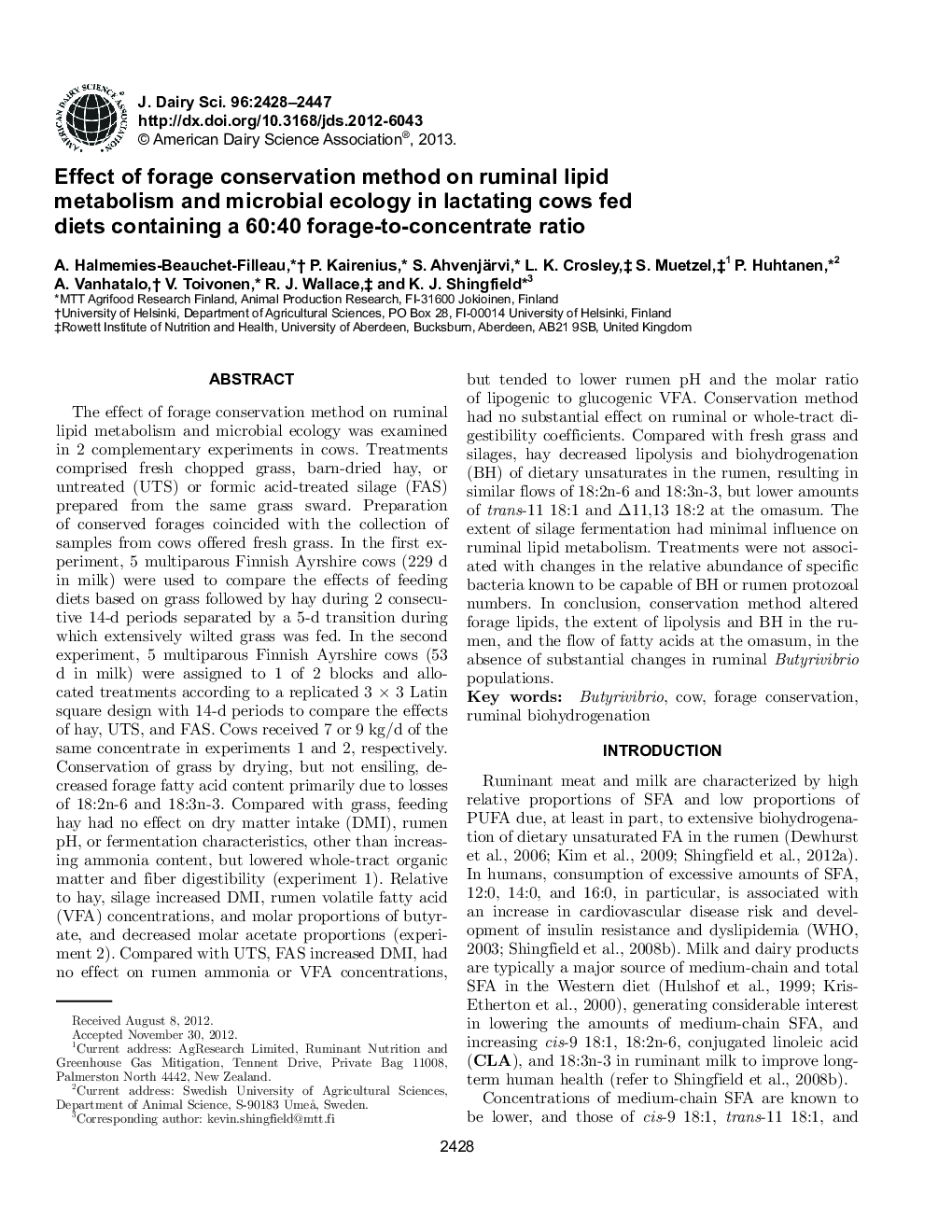| Article ID | Journal | Published Year | Pages | File Type |
|---|---|---|---|---|
| 10979064 | Journal of Dairy Science | 2013 | 20 Pages |
Abstract
The effect of forage conservation method on ruminal lipid metabolism and microbial ecology was examined in 2 complementary experiments in cows. Treatments comprised fresh chopped grass, barn-dried hay, or untreated (UTS) or formic acid-treated silage (FAS) prepared from the same grass sward. Preparation of conserved forages coincided with the collection of samples from cows offered fresh grass. In the first experiment, 5 multiparous Finnish Ayrshire cows (229Â d in milk) were used to compare the effects of feeding diets based on grass followed by hay during 2 consecutive 14-d periods separated by a 5-d transition during which extensively wilted grass was fed. In the second experiment, 5 multiparous Finnish Ayrshire cows (53Â d in milk) were assigned to 1 of 2 blocks and allocated treatments according to a replicated 3Â ÃÂ 3 Latin square design with 14-d periods to compare the effects of hay, UTS, and FAS. Cows received 7 or 9Â kg/d of the same concentrate in experiments 1 and 2, respectively. Conservation of grass by drying, but not ensiling, decreased forage fatty acid content primarily due to losses of 18:2n-6 and 18:3n-3. Compared with grass, feeding hay had no effect on dry matter intake (DMI), rumen pH, or fermentation characteristics, other than increasing ammonia content, but lowered whole-tract organic matter and fiber digestibility (experiment 1). Relative to hay, silage increased DMI, rumen volatile fatty acid (VFA) concentrations, and molar proportions of butyrate, and decreased molar acetate proportions (experiment 2). Compared with UTS, FAS increased DMI, had no effect on rumen ammonia or VFA concentrations, but tended to lower rumen pH and the molar ratio of lipogenic to glucogenic VFA. Conservation method had no substantial effect on ruminal or whole-tract digestibility coefficients. Compared with fresh grass and silages, hay decreased lipolysis and biohydrogenation (BH) of dietary unsaturates in the rumen, resulting in similar flows of 18:2n-6 and 18:3n-3, but lower amounts of trans-11 18:1 and Î11,13 18:2 at the omasum. The extent of silage fermentation had minimal influence on ruminal lipid metabolism. Treatments were not associated with changes in the relative abundance of specific bacteria known to be capable of BH or rumen protozoal numbers. In conclusion, conservation method altered forage lipids, the extent of lipolysis and BH in the rumen, and the flow of fatty acids at the omasum, in the absence of substantial changes in ruminal Butyrivibrio populations.
Related Topics
Life Sciences
Agricultural and Biological Sciences
Animal Science and Zoology
Authors
A. Halmemies-Beauchet-Filleau, P. Kairenius, S. Ahvenjärvi, L.K. Crosley, S. Muetzel, P. Huhtanen, A. Vanhatalo, V. Toivonen, R.J. Wallace, K.J. Shingfield,
